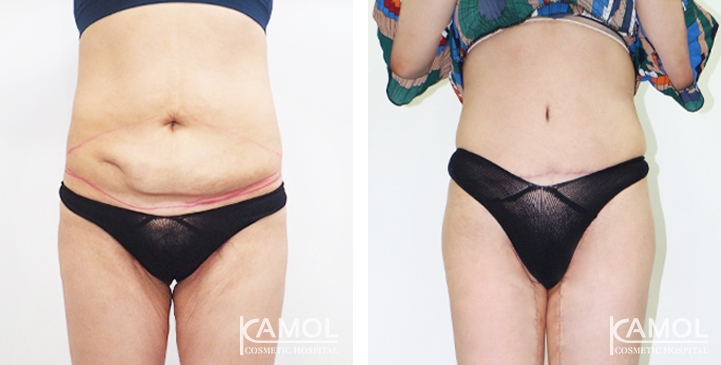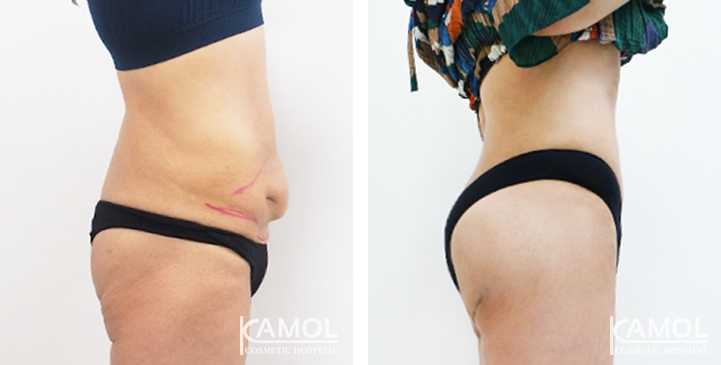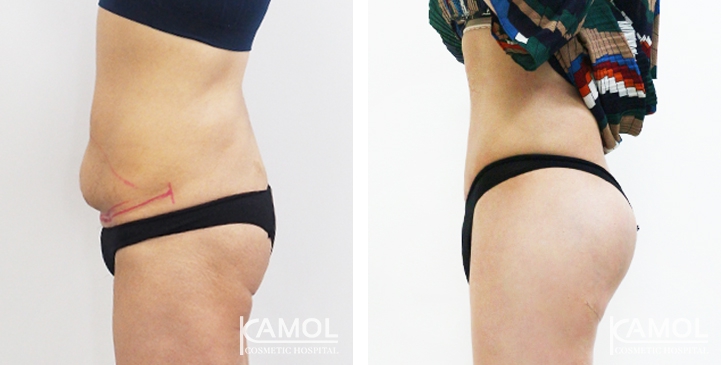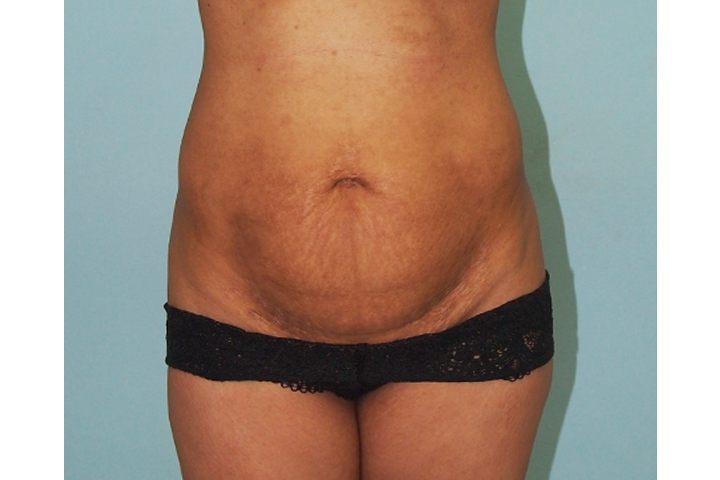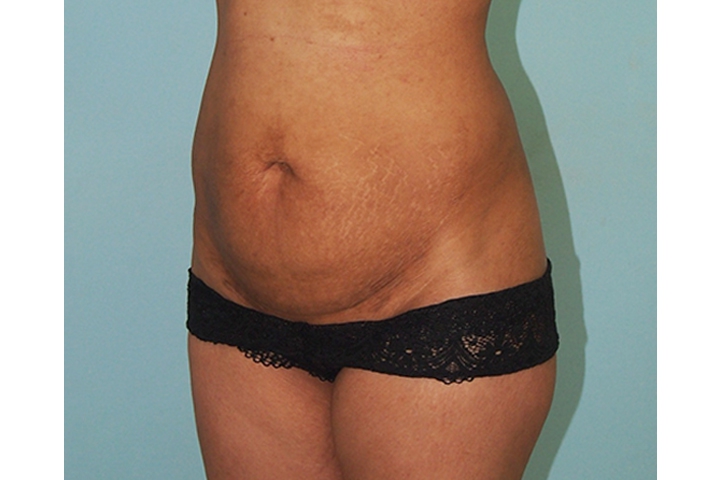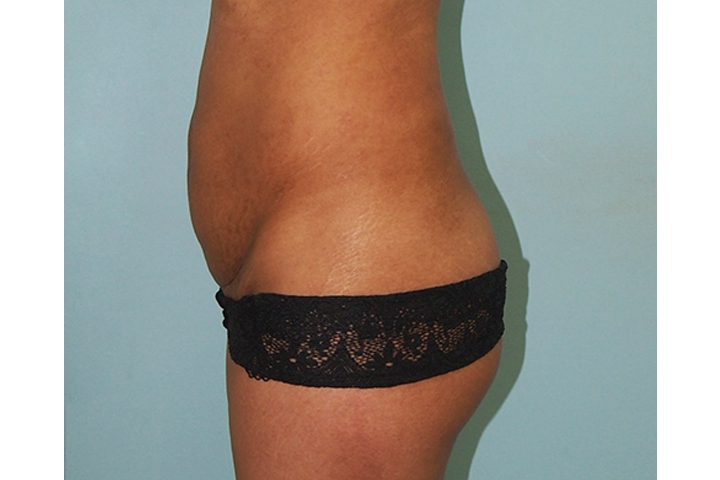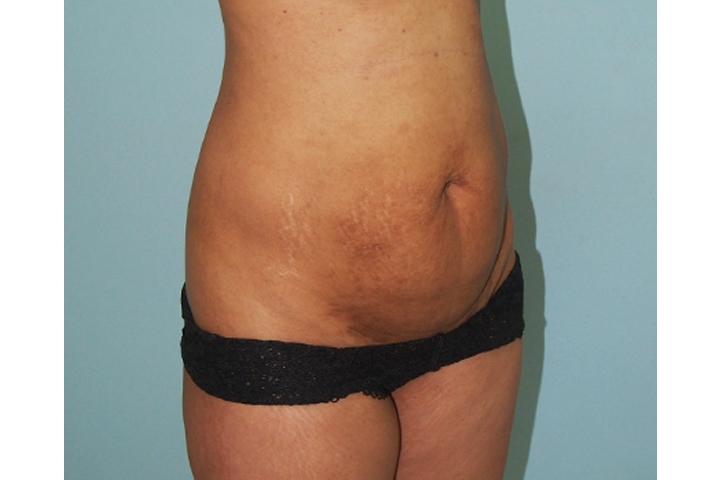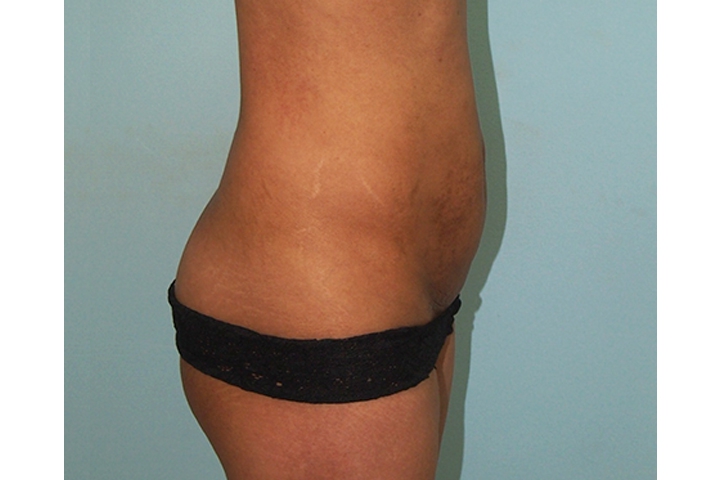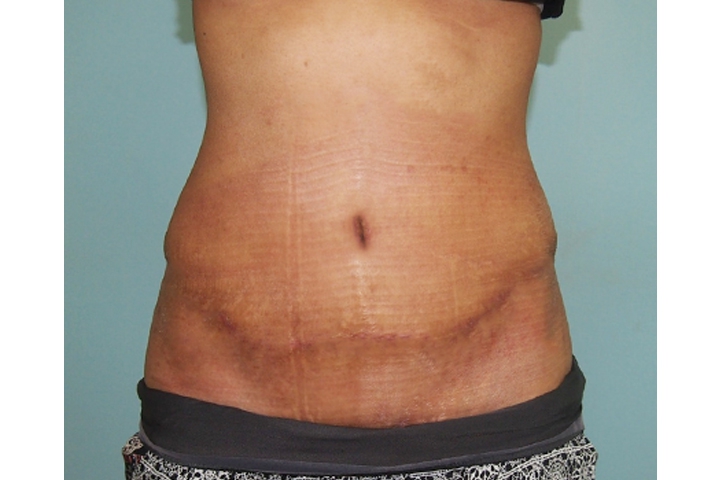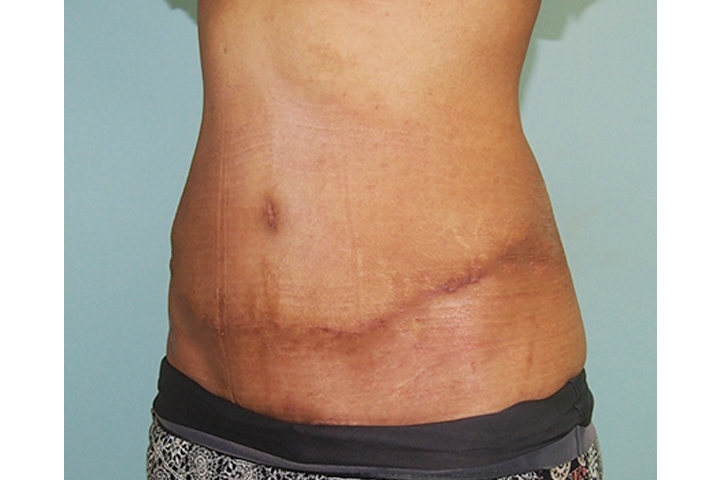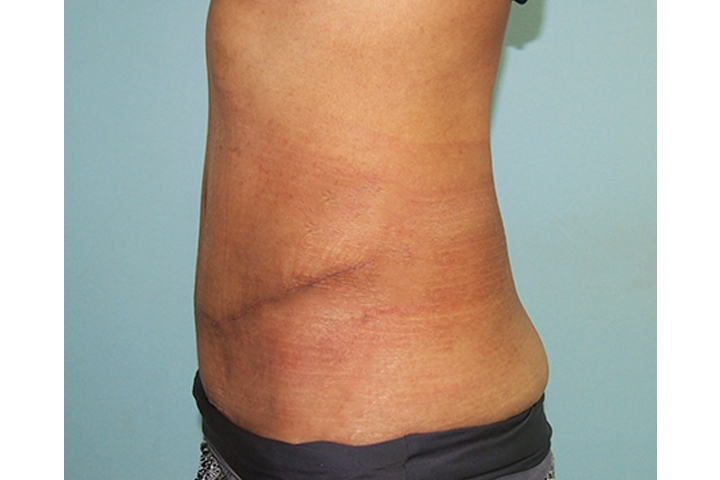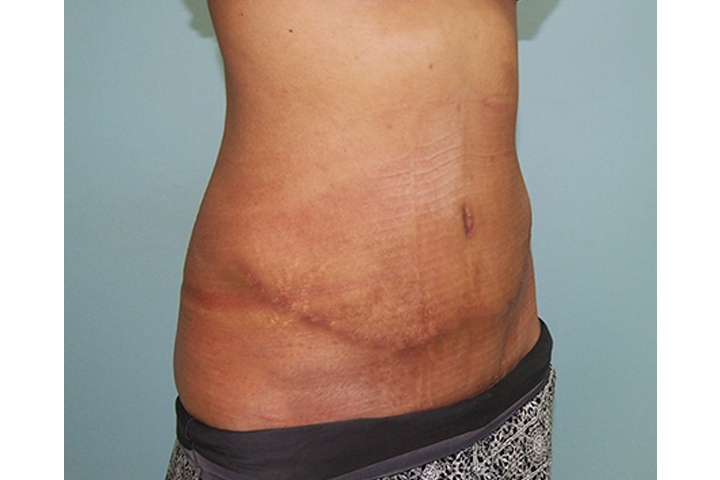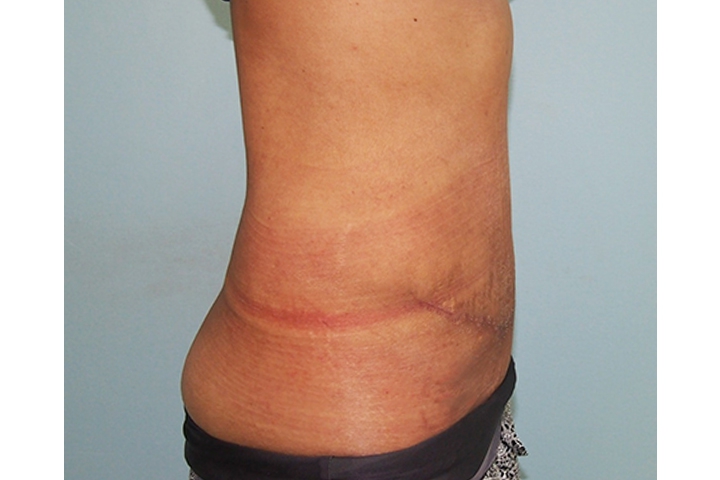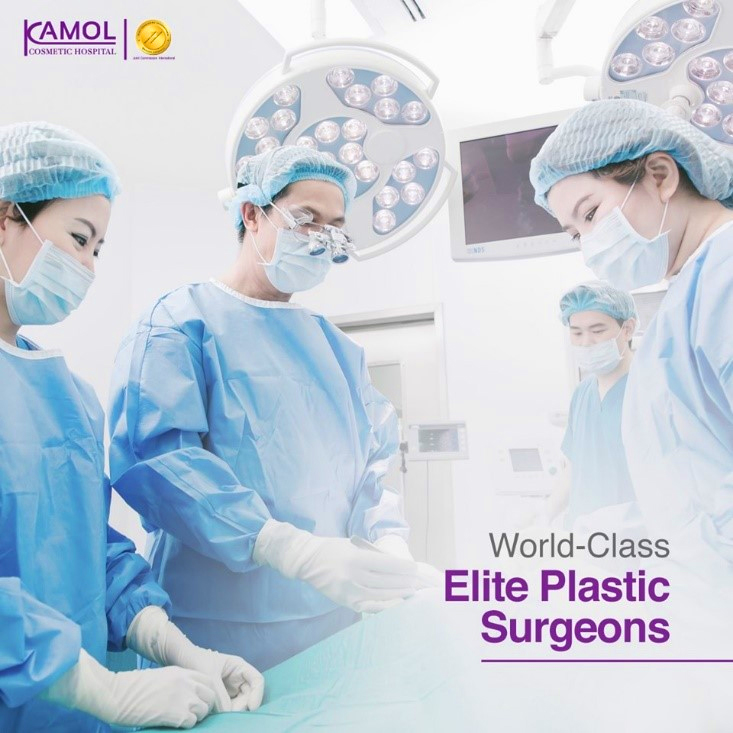Abdominoplasty/ Tummy tuck in Bangkok, Thailand
Abdominoplasty, or tummy tuck, is a procedure that flattens the abdomen by removing extra fat and skin and tightening muscles in your abdominal wall. The procedure benefits to those after childbirth, especially women after numerous pregnancies, and help them get desirable body figure. With incision along bikini line, the surgery is performed under general anesthesia and it takes around 3-4 hours. After the surgery, the patient needs to be admitted three nights to the hospital. The surgery usually leaves a scar along the pubic hair line, possibly from left to right side of the hips, depending on the volume of fat and excess skin.
We offer two types of Abdominoplasty/ Tummy tuck
1. Abdominoplasty/ Tummy tuck with umbilical transposition and repairing the sagging
abdominal muscles
This procedure is suitable for a person who has a lot of excess fat and skin, or stretch marks from childbirth. This procedure must be performed under general anesthesia
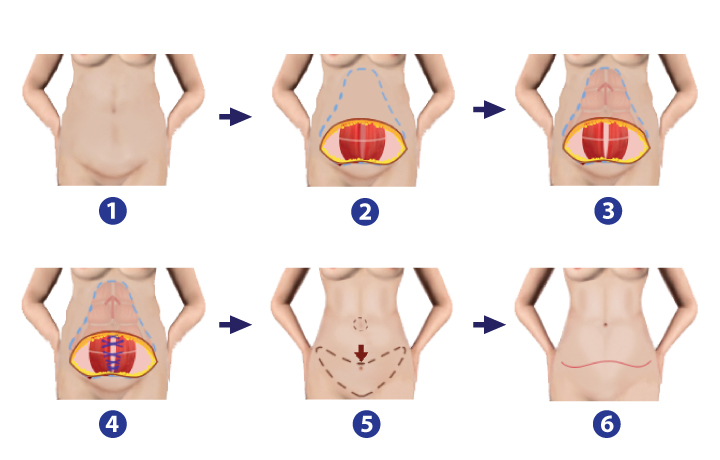
Picture 1. Shows the procedure of Abdominoplasty /tummy tuck with umbilical transposition and repairing the sagging abdominal muscles
1. The surgeon will examine the sagging of the muscles for surgical planning, as show in figure 1.
2. The surgeon marks the incision on the bikini line then opens the wound through the layer of the skin to the muscle, as shown in figure 2.
3. Fibrosis between the layer of the skin and the muscle are released from the pubic to the sub-mammary area. Then surgeon will then see the sagging muscles clearly.
4. The surgeon then repairs the sagging abdominal muscles from sub-mammary to the pubic tightening the abdominal muscles, as shown in figure 4.
5. The layer of the skin and fat is pulled down, with the excess, from the former umbilical to the pubic removed. The surgeon then sutures the fat layer with the dissolvable stitches, creates and retouches the new umbilical carefully to prevent the scar, as shown in figure 5.
6. The surgeon cuts and sutures the excess skin on the pubic area.
**The operation time is around 3-4 hours**
2. Mini Abdominal Lipectomy
This procedure is suitable for a person who has moderate excess fat but with stretch marks. This procedure aims to correct the stretch marks and can be performed under local anesthesia or general anesthesia. The patient can perform by day surgery.

Picture 2. Shows Surgical Procedures of Mini Abdominoplasty.
1. The surgeon will check the sagging of the muscles for surgical planning, as shown in figure 1.
2. The surgeon opens the wound on the pubic, releases the fibrosis between the layer of the skin and the muscle from the pubic to the below umbilical area.
3. The layer of the skin and fat is then pulled down. The surgeon then cuts and sutures the excess
skin on the pubic area.
Preparing for Abdominoplasty / Tummy tuck
- Consult with the surgeon to your goals, lab test, and medical evaluation
- Get a lab test or a medical evaluation
- Take certain medications or adjust your current medication
- Stop smoking before and after surgery 2 weeks
- Avoid taking aspirin, anti-inflammatory drugs and herbal supplements as they can increase bleeding
Procedure for Abdominoplasty/ Tummy tuck
- Step for Anesthesia, we offer general anesthesia.
- The surgeon marks the area for incision at the bikini line and then open the incision, if the patients required the Tummy tuck with reposition umbilical and repair the sagging muscle, the patient has to open the tissue above the abdominal muscle pass through the lower breast (submammary area), and then fix the muscle to tighten at the midline of the abdomen. Pull down the skin, cut the excess. If patients required mini tummy tuck, the surgeon will open the incision and cut the excess skin.
- Close the incision by suture
Post-operative care
- During the first 2-3 days after the surgery, the patient must start wearing the full-length compression garment every day to tighten the muscle and reduce the swelling. After one month, the patient can continue to wear it at night to support the muscle.
- The stitches will be removed six days after the surgery.
- The patient can start exercise about two months after the surgery.
- The swelling will reduce and the wound will be healed three to four months after the surgery.
Forewarning for post-operative care
- Refrain from showering until two to three days after the surgery. Dress the wound according to the doctor’s recommendation.
- Wear the compression garment all the time during the first month. After one month, the patient should continue wearing to support the muscle and prevent tearing of wound.
- Bruises might be visible, but they should be gone in two to three weeks. If there is pain, swelling or redness, please come to see the doctor immediately.
Risk and Complication for Tummy tuck
- Bleeding
- Infection
- Fluid accumulation (seroma)
- Poor wound healing
- Skin loss
- Numbness
- Skin discoloration and/or prolonged swelling
- Scarring
- Anesthesia risks
- Recurrent looseness of skin
- Fat necrosis
- Deep vein thrombosis, cardiac and pulmonary complications
- Asymmetry
- Persistent pain
Recovery for Tummy tuck
The recovery of Abdominoplasty / Tummy tuck varies depending on the surgical technique performed. Your drains will be left in for a few days after the surgery. You need to take an antibiotic and an anticoagulant while your drains are in place. You need to wear an abdominal binder for about six weeks. It will help you to avoid fluid buildup and helps to support your abdomen. Mini Abdominoplasty / Mini tummy tuck is usually use shorter period time of the recovery. You need to avoid strenuous activity for at least six weeks, can return to work after surgery 2-6 weeks
Getting to Know for Abdominoplasty/ Tummy tuck
Benefit of Metoidioplasty
Benefit of Metoidioplasty
How to prevent and treatment scar after tummy tuck?
How to prevent and treatment scar after tummy tuck?
Mini Tummy Tuck vs Full Tummy Tuck
Mini Tummy Tuck vs Full Tummy Tuck
Before & After Tummy Tuck
Reviews: Tummy Tucks
How long does it take for Tummy Tuck scars to go away?
The recovery time for a tummy tuck can vary depending on the individual and the extent of the surgery. Typically, the initial healing process can take several weeks. In general, it can take several months for the incision lines to fully heal, and for the scars to fade. However, the final appearance of the scars can take up to a year or more. Additionally, after the surgery, it's important to follow the care instructions provided by your surgeon to ensure proper healing and to minimize the visibility of scars.
What are the steps to follow to treat Tummy Tuck scars?
The best way to treat tummy tuck scars is to follow the care instructions provided by your surgeon. Here are a few general steps that may be recommended:
- Keep the incision clean and dry: Your surgeon will give you instructions on how to care for your incision, which may involve cleaning it with an antiseptic solution and keeping it covered with a bandage for the first few days.
- Avoid strenuous activities: You'll need to avoid strenuous activities that can cause strain on the abdominal area, such as heavy lifting or intense exercise, for several weeks after surgery.
- Wear compression garments: Your surgeon may recommend that you wear a compression garment or elastic bandage to help support the abdominal area and reduce swelling.
- Massage the scars: After the incision has healed, your surgeon may recommend that you massage the scars to help soften and flatten them.
- Avoid sun exposure: It is important to protect scars from the sun to prevent darkening or hyperpigmentation
- Use topical treatments: Your surgeon may recommend using topical treatments such as silicone gel or scar cream to help improve the appearance of the scars.
It's important to note that scarring is a natural part of the healing process, and not all scars can be completely eliminated. However, following these steps can help to minimize the visibility of the scars and promote healing.
How to prevent Tummy Tuck scars and how to control it?
While it is not possible to completely prevent scars from forming after a tummy tuck, there are steps you can take to minimize their appearance and help them heal well.
- Choose a qualified surgeon: Selecting a qualified and experienced plastic surgeon can help to minimize the risk of complications and ensure that the incision is made in a way that will minimize scarring.
- Follow post-operative instructions: Following your surgeon's post-operative instructions carefully, such as keeping the incision clean and dry, avoiding strenuous activities, and wearing compression garments as advised, can help to minimize the risk of complications and promote healing.
- Avoid sun exposure: It is important to protect the scars from the sun to prevent darkening or hyperpigmentation.
- Massage the scars: After the incision has healed, your surgeon may recommend that you massage the scars to help soften and flatten them.
Use topical treatments: Your surgeon may recommend using topical treatments such as silicone gel or scar cream to help improve the appearance of the scars.





